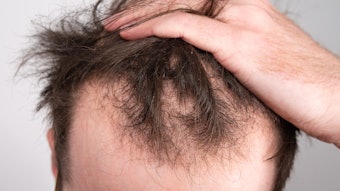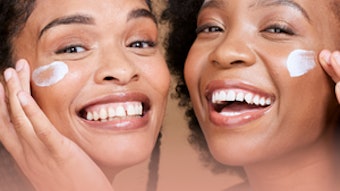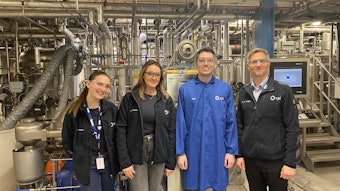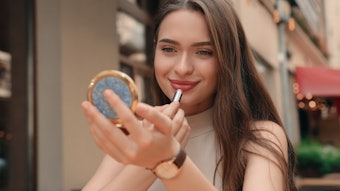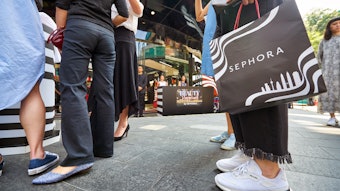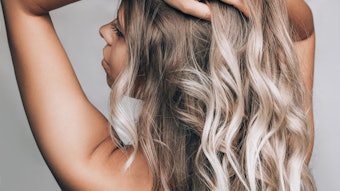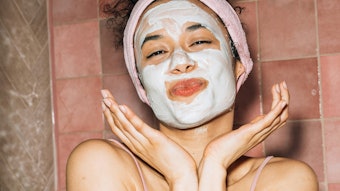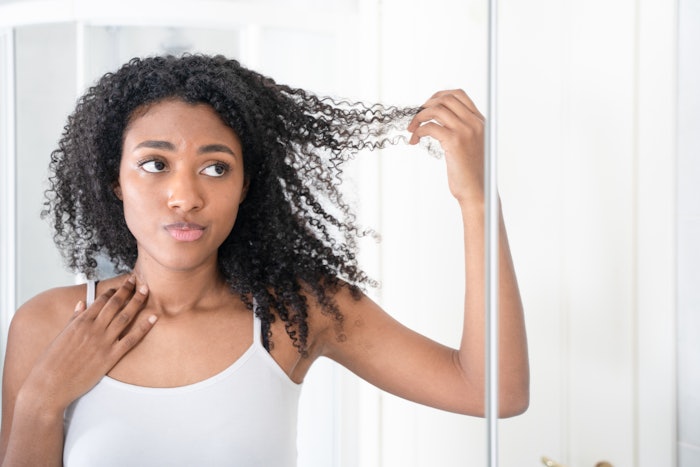
The science of hair care is at a fascinating crossroads, where biology, advanced materials and artificial intelligence are converging to create next-gen innovations. These transformations in scalp health and strand science are redefining the way we treat, rebuild and care for hair.
Log in to view the full article
The science of hair care is at a fascinating crossroads, where biology, advanced materials and artificial intelligence are converging to create next-gen innovations. These transformations in scalp health and strand science are redefining the way we treat, rebuild and care for hair.
But do these advances live up to consumer expectations? Here, industry experts help us explore the latest trends and technologies, challenges, limits and evolving landscape of hair care innovation — and what it all means. They also project some bright spots for future development.
Guiding our discussion are Perry Romanowski (PR), a cosmetic chemist, hair care expert, chair of the IFSCC education committee (2024-2025) and vice president of Element 44; Jennifer Marsh, Ph.D. (JM), a research fellow at Procter & Gamble; and Fraser Bell, Ph.D., (FB), head of advanced research for K18 Hair.
C&T: What major trends have you seen in hair care innovation in recent years?
 Image by New Africa at Adobe Stock
Image by New Africa at Adobe Stock
PR: I think the main trend in hair care innovation has been “bond builders." It started with the Olaplex product. This claimed to reduce or fix hair damage caused by chemical treatments like coloring, perming or relaxing.
The idea is that it would help rebuild the sulfur-sulfur bonds that are broken during these processes. The technology, coupled with a strong marketing story, led to growth in not only the brand, but also the idea behind the technology.
This inspired other versions of bond builders like those based on peptides (K18) and acids (citric acid). Whether these technologies actually provide a noticeable consumer benefit is yet to be seen, but they certainly have inspired new launches and research.
Another trend that has certainly made its way into hair care products is the concept of skinification, which is essentially just trying to market hair care products with skin care benefits. Those could be anti-aging for hair, or technologies targeting the scalp. Again, I’m not sure that these technologies provide any measurable, consumer-noticeable difference but they do help fuel sales in the hair care category.
JM: There are several trends that have come over the last few years. Scalp care beyond flakes and dandruff is a growing trend. Preventing dandruff is, of course, still a very important need for the half of the population that struggles with the condition. Recent research and product innovation have also shown how we can improve hair health by improving scalp health, even for those with an asymptomatic scalp.
There has [also] been a lot of innovation in the treatment space over the past few years expanding into new forms and benefit spaces; for example, creating a penetrating hair oil using plant oils in place of silicone as an alternative to traditional hair oils, which typically includes surface-depositing, high molecular weight ingredients.
FB: Clean beauty, scalp care and the "skinification" of hair care have taken center stage in recent years. But beyond trends, both hair professionals and consumers are really looking for products that deliver meaningful results, whether it's in enhancing the services they provide or helping them achieve their hair goals. Rather than following trends, it's important that product innovators work to understand the problems that need to be solved.
C&T: What new approaches or technologies do you see shaping the future of hair care?
PR: While I don’t believe there are any examples at the moment, I think the most promising technology is in peptides and polymers. We are just learning how to control the exact structure of these technologies so I believe, coupled with AI, there are numerous breakthrough peptides and polymers that could significantly change the performance of hair care products. I could imagine long-term conditioning, self-cleaning hair, effective heat protectors and more.
JM: One new approach over the last few years has been the focus on identifying ingredients that are proven to work inside hair, complementary those that improve hair’s surface properties. I think this space will grow as we can design, more intentionally, to have materials that work in targeted inner and outer regions of the hair fiber, solving different problems and elevating the benefits beyond where they are today.
Over the past few years, wash frequency has been declining but more recently, we’ve seen a renewed appreciation of cleansing and its importance to hair and scalp health that goes beyond hygiene. For example, clinical research has proven the link between a more regular wash frequency and improved scalp health, which then in turn impacts hair health. I think we’ll see a reinvention of the cleansing space over the next few years.
FB: At K18, we take a "biology-first" approach aimed at understanding the root cause of hair and scalp problems through their biology. Scientific advances in genomics, transcriptomics, epigenomics, proteomics and microbiomics are today providing us with unprecedented new insights. Alongside these methods, biotechnology and its coupling with AI is unlocking patterns and solutions we couldn't access before, setting the stage for the next generation of products.
C&T: What are the scientific limits to formulating effective hair care products?
PR: There are three significant obstacles to making more effective hair care products.
First, the products already work pretty well. Shampoos clean hair. Styling products hold hair and allow for making nearly any shape wanted. Also, conditioners are very good at detangling, improving ease of combing and shine. And they all do it at home. So, making improvements on products that already work is just REALLY HARD!
Second, consumers aren’t good at noticing small improvements. While innovation is difficult, products have gotten a bit better in subtle ways. Products work more efficiently, costs have gone down, and they are aesthetically more pleasant to use. However, those subtle changes go unnoticed by consumers, who are much more swayed to make purchases based on marketing stories and fragrance.
Finally, the regulatory environment in the industry is getting more and more difficult to navigate. The cost of creating and safety testing a truly new ingredient is quite high, with no guaranteed payoff for the investment. With the banning of animal testing and the slow development of testing alternatives, raw material companies are faced with making safe iterations on existing technologies.
Additionally, many of the problems that consumers face could be addressed by ingredients that interact with the biochemistry of the user. This, unfortunately, would classify most cosmetics as drugs and would require much more involved testing and cost.
JM: We know that treatments can often deliver higher efficacy for benefits such as frizz control or conditioning, but for some women, treatment forms are off-putting. There are many products, so choosing the right one for the benefit and hair type can be a challenge. Also, women often don’t know how to use it properly, so there is still a need for education.
Another limitation is the habits and practices that women are using – we still see high coloring and bleaching incidences; high use of heated tools especially flat irons; AND we see a trend for longer hair. This creates a lot of underlying damage to the hair structure, which changes how receptive hair fibers are to caring ingredients. So, we are constantly improving our product offerings to keep up with the increasing demands.
FB: Instead of thinking about limitations, we look for possibilities. Deeply understanding hair professional and consumer needs allows for their translation into technical insights that help us to target real benefits. Multi-omics tools and what they've told us are opening doors to innovations that weren't possible even a few years ago.
C&T: How do biology, genetics and environmental influences impact product efficacy?
PR: For the most part, hair is hair. Everyone has hair that is made up of keratin protein and the primary genetic differences are in color and shape. The color has little impact on product development but the hair shape is a huge factor.
More curly hair can be less prone to absorbing water and other ingredients found in hair care conditioners. It can also be more brittle and easily damaged, and can get weighed down, so lighter conditioners are needed.
JM: I am not sure these influences limit our product design; it is more they provide new opportunities for innovation. For example, by understanding the environmental influences such as UV impact on hair, we can create solutions to give hair effective UV protection, like the oxidative stress-reducing ingredient histidine. The same with hair biology and genetics – these factors lead to women having unique needs that inspire new and more personalized innovations.
FB: Biology, genetics and environmental influences aren't barriers, they're guides and must be properly understood to create targeted, high-performing products. It's important that products are formulated intentionally to address the user experience and aren't designed generically without attention to individual factors. Hair care shouldn't be one-size-fits-all; it should meet individual needs, whether protecting against chemical damage or fighting frizz in humid weather.
C&T: What is the biggest challenge in meeting both consumer demands and regulatory requirements?
PR: The most challenging aspect is creating products that are noticeably different than other things on the market. As a formulator, you develop your evaluation skills and can really notice subtle changes. Unfortunately, your consumer is not nearly as trained and often misses substantial differences. The influence of fragrance and marketing is huge!
Another similar challenge is having to formulate to a blacklist like Credo's or Whole Foods' clean beauty lists. It used to be that you didn’t have to think much about the preservative system you’d use. A paraben and a formaldehyde donor could protect your products from pretty much anything.
With those ingredients falling out of favor, finding the right, effective preservative is much harder. And unfortunately, this interferes with your ability to research things that might make substantial performance differences.
JM: [We are seeing a change in consumer demands based on changing hair structure – namely, an] increased incidence of textured hair. With more variation in hair texture, we are adapting our formulations to meet a wider range of hair types.
For regulatory changes, we need to stay close to [them and] adapt our formulations accordingly. We also need to share our science in these spaces to help inform changes to be considered for the future. We can think of regulatory change as a disruption but sometimes it can force us to innovate and get to even better solutions.
FB: Regulatory standards simply provide a framework to ensure safety and quality, they're non-negotiable. The bigger challenge is building consumer trust by delivering on performance and with transparency, while staying compliant and maintaining the highest internal standards.
C&T: What makes testing hair care products difficult?
 Image by Pixel-Shot at Adobe Stock
Image by Pixel-Shot at Adobe Stock
PR: Perhaps the biggest difficulty is creating tests that give replicable results. Often, you have to design a custom product test to support a claim that your marketing group wants to make. Those tests are challenging to make and the substrate of hair is just so different from tress to tress that you end up getting a wide variation of results.
So your great new formula might score well against a competitor’s in one run of the test but in the next run of the test, the results are different. It’s incredibly frustrating.
Add to that the fact that consumers are swayed by aesthetic things like fragrance, bottle color and the marketing story, and you get a situation where the lab tests come out great but the product is unsatisfactory to consumers.
JM: We believe we need to use both lab and real-world testing to get to superior products that really transform people’s lives. This takes time and investment to do well, which can challenge the speed of innovation. For the lab work, the challenge is to make sure we have representative substrates and protocols so we can screen the best solutions to progress into more real-world testing.
Real world testing often requires large base sizes to account for the large variability in hair types, hair habits and practices. While this can be time-consuming to do, it is an essential step to ensure what we see in the lab translates to what people experience with their own hair.
FB: Whenever we're developing a new hair care product we need to know that it will perform under real-world conditions: the challenge is bridging the lab and real life. We test at every stage: molecular models, hair fibers and tresses, and in the real-world with professionals and consumers.
In the lab, we can obtain great insight that a technology or product will perform through the use of evaluation methods that are relevant to target end-points, but it's only when we test with the user that we can have full confidence that a product performs as needed.
C&T: Are there any interesting future innovations on the horizon?
PR: One potential technology might be personalized hair care based on a person’s genetics. Genetic testing is already widely available and, at least theoretically, hair might benefit from a formula customized to an individual’s genetic markers. But we don’t have a good sense of how hair condition syncs up to genetics, so there is still a lot of work to be done there.
Another interesting possibility would be to create a high tech film on the hair that is responsive to the current environment. Imagine being able to control the shape of your hair through an app on your phone.
JM: Yes, but can’t share, sorry. 😊
FB: While we can't reveal too much, K18 has an exciting pipeline ahead. Expect more products built on strong scientific foundations, focusing on molecular repair and true hair and scalp health, not just cosmetic fixes.
C&T: How will AI, precision biology and material sciences transform hair care?
PR: In the short run, AI will provide good grist for marketing stories. It will also be helpful for creating starting formulas, and coming up with product claims and tests to demonstrate the claim. Essentially, AI will be a coworker in the lab and will likely replace some of the chemists that are now there. I could see older cosmetic formulators retiring and not being replaced.
Advanced material science may have a role in creating more robust films on the hair, which could better protect the hair from UV and heat damage.
I’m not sure precision biology will have much impact, as anything that interacts with the body biochemistry would be considered a drug and would not be suitable for cosmetics. But I could be wrong, as many companies are already blurring the line between the two.
JM: As science and technology evolve, we will take advantage of these tools to enable us to innovate faster and better. AI has huge potential and we already have examples of how it is helping us now; for example, getting more personalized data from a wider variety of consumers.
For precision biology and advanced materials, these solutions are two of many new ways for us to deliver improved performance. I can see these materials becoming more common in our formulation toolbox.
FB: AI is becoming a powerful tool in beauty innovation, especially when paired with biological insights and material science, and importantly, user understanding. AI will help us better understand individual needs, screen new ingredients, and design and optimize formulations. Still, human scientific expertise and interpretation and real-world feedback on product performance will remain essential.
